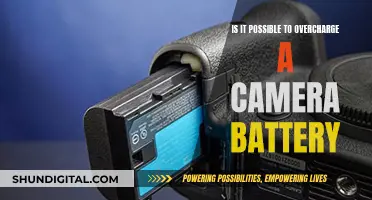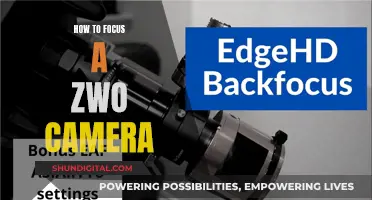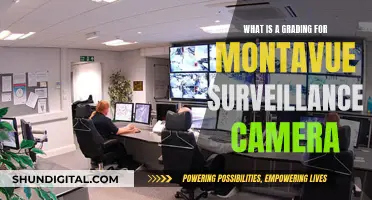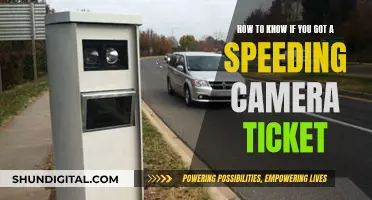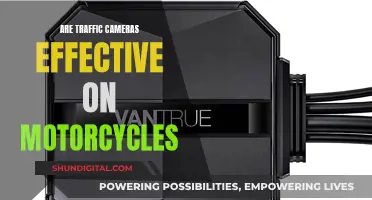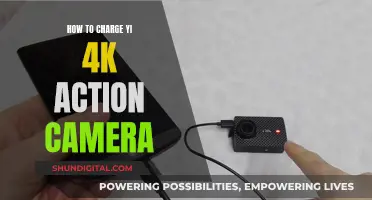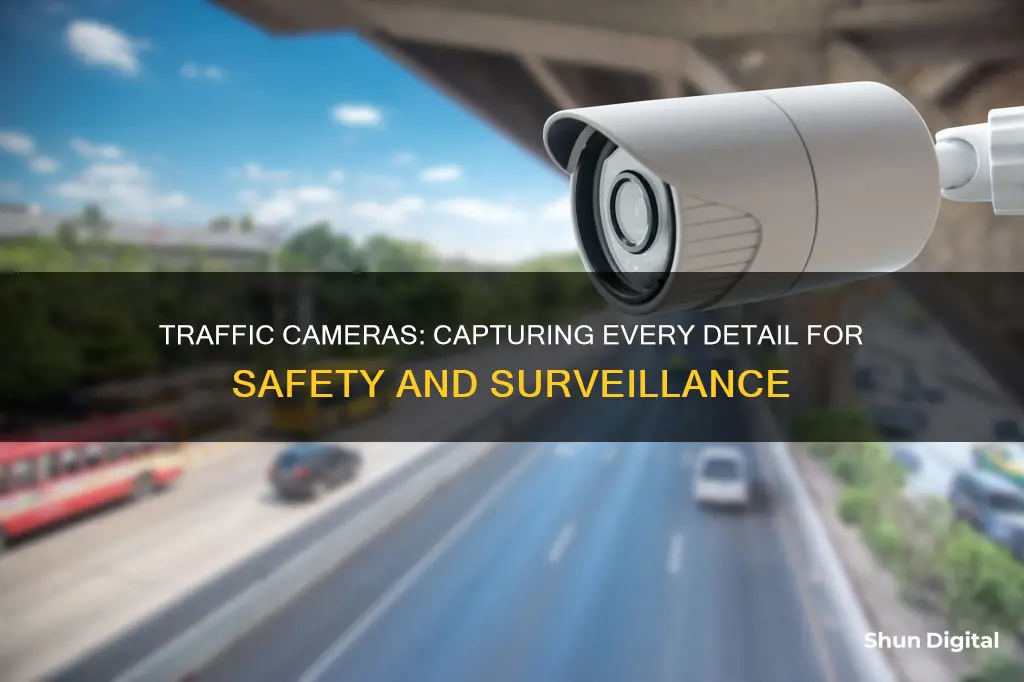
Traffic cameras are a common sight in cities across the United States, and their presence is growing. They are typically used to monitor traffic patterns and enforce road rules, such as red light and speeding violations. While some traffic cameras provide a live stream for traffic management, many do not record sustained footage and are not stored long-term. This means that accessing footage from a traffic camera following an incident can be challenging and often requires the assistance of a lawyer. In terms of what they capture, traffic cameras are usually positioned to capture license plates, rather than the interior of vehicles, and are triggered by movement.
| Characteristics | Values |
|---|---|
| Purpose | Detecting motoring offences, including speeding, red light violations, toll booth avoidance, unauthorised use of bus lanes, and recording vehicles inside congestion charge areas |
| Type | Traffic enforcement camera, red light camera, speed camera, road safety camera, road rule camera, photo radar, photo enforcement, Gatso, safety camera, bus lane camera, flash for cash, Safe-T-Cam, No Contact Apprehension Camera |
| Mounting | Beside or over a road, installed in an enforcement vehicle, on top of traffic signals, mounted on poles beside the road, attached to gantries over the road, attached to overpasses or bridges, concealed (e.g. in garbage bins) |
| Functionality | May be linked to an automated ticketing system, used for tracking the whereabouts of drivers, measuring traffic flow, determining traffic light timing, accident reconstruction |
| Storage | Most traffic camera systems store footage for a few days to several weeks, but some systems store footage for longer, up to several months or years |
| Image Type | Still images, video footage |
| Image Duration | Typically around 12 seconds, triggered by movement |
| Image Quality | Varies, often low-quality |
What You'll Learn

Red light violations
Red light cameras are a type of traffic enforcement camera that captures vehicles that enter an intersection after the traffic signal has turned red. These cameras are triggered when a vehicle enters the intersection after a preset minimum speed and following a specified time after the signal has turned red. They are used worldwide, including in the US, the UK, China, European countries, and several others.
Red light cameras typically capture still images, but some may also record short video clips. The footage usually includes the date and time, location, vehicle speed, and the amount of time elapsed since the light turned red and then yellow. This evidence is then used by law enforcement officials to determine whether a violation occurred and, if so, a citation is mailed to the owner of the vehicle.
In some jurisdictions, if the driver cannot be properly identified, a notice of violation is sent to the owner, requesting identifying information so that a ticket can be issued. In other cases, a fine is simply assessed to the owner, who is then responsible for collecting the fine from the offending driver. Importantly, these citations are generally not considered moving violations and do not result in points against the driver's license.
While red light cameras are used in many states, their use remains controversial. Some argue that they improve road safety and reduce accidents, while others contend that they are more for financial gain and can even increase the risk of certain types of collisions. Additionally, there are concerns about privacy and drivers' rights when it comes to automated enforcement through cameras.
Unlocking RAW Image Potential: Editable Features Explained
You may want to see also

Speeding
Traffic cameras are becoming an increasingly common sight in cities across the United States. They are typically mounted beside or over a road or installed in an enforcement vehicle to detect and deter motoring offences, such as speeding.
Speed cameras are one of the most common types of traffic cameras. They are similar in concept to red-light cameras, automatically detecting and issuing violations for speeding. Speed cameras usually capture about 12 seconds of footage when a vehicle is speeding. They are often placed on less populated back roads and in residential areas where speeding is a frequent issue.
There are two types of speed cameras: fixed and mobile. Fixed speed cameras are mounted on elevated poles at the side of the road and are easily spotted due to their bulky weatherproof enclosures and external flashes. Mobile speed cameras, on the other hand, are trickier to notice as they are not permanently mounted. They can be placed on a camera tripod or inside a van and are often moved around, making them difficult to locate.
Mobile speed cameras typically use a special type of radar called low-powered K-band and MRCD (or Multaradar) that is hard for radar detectors to detect. This technology allows for long-distance detection of speeding vehicles.
The use of speed cameras has been shown to be effective in reducing speeding and improving road safety. Studies have found that speed cameras led to a reduction of "11% to 44% for fatal and serious injury crashes". The UK Department for Transport estimated a 22% reduction in personal injury collisions and a 42% reduction in people being killed or seriously injured at camera sites.
While some people may view speed cameras as a revenue-raising tool for local governments, they have been proven to save lives and make roads safer.
Obtaining Traffic Camera Footage in Utah: A Step-by-Step Guide
You may want to see also

Bus lane violations
Bus lane cameras are a type of traffic enforcement camera used to monitor and enforce compliance with bus lane restrictions. They are typically mounted on roadsides or installed on enforcement vehicles, capturing images or videos of vehicles that violate designated bus lane rules. These rules generally prohibit motorists from driving in bus lanes during specified hours, except under certain circumstances like turning at the nearest intersection or picking up/dropping off passengers.
Bus lane camera violations can result in fines, with penalties escalating for multiple offences within a 12-month period. For example, in New York City, the fine for a first offence is $50, increasing to $250 for each additional offence. The Metropolitan Transportation Authority (MTA) in New York has implemented Automated Camera Enforcement (ACE) on several bus routes, combining bus lane enforcement with penalties for double parking and bus stop violations. This technology has led to increased bus speeds, reduced collisions, and lower emissions.
Bus lane enforcement cameras can use sensors in the road that trigger number-plate recognition, comparing the vehicle's registration with a list of approved vehicles. Alternatively, cameras may be mounted on buses themselves to monitor compliance. These systems help ensure buses can pull up to the curb safely and efficiently, benefiting all passengers, especially those with mobility challenges.
Tethering Your Camera to Your Computer: Lightworks Guide
You may want to see also

Congestion charge areas
In London, for example, the Ultra Low Emission Zone (ULEZ) aims to reduce air pollution by imposing a daily charge on vehicles that do not meet emission standards. Transport for London (TfL) manages the ULEZ and uses a network of cameras to monitor compliance. Similarly, the Congestion Charging Zone in London also relies on cameras to enforce the congestion charge.
The number of cameras in congestion charge areas can vary depending on the size and scope of the zone. For instance, in London's ULEZ, there are currently 1,775 cameras installed, with a planned total of 2,750. These cameras operate 24 hours a day, 7 days a week, capturing the license plate details of vehicles within the zone.
The data captured by these cameras is used to identify vehicles that have not paid the required charge, and penalties may be imposed for non-compliance. It's important to note that the presence of these cameras may not always be apparent, and their locations can sometimes be changed to prevent drivers from deliberately avoiding them.
Overall, the use of cameras in congestion charge areas is a crucial tool for managing traffic flow, reducing congestion, and improving air quality in urban areas. By capturing license plate information, these cameras help enforce the relevant regulations and ensure that drivers comply with the charges or emissions standards set for the zone.
The Dangers of Leaving Your Camera in Your Car
You may want to see also

Vehicle noise
Traffic cameras are usually installed to detect motoring offences, including speeding, red-light running, toll booth avoidance, and unauthorised use of bus lanes. However, noise enforcement cameras are also being used to monitor and enforce compliance with local or national vehicle noise limits. These noise cameras are equipped with microphones that can detect when a vehicle is emitting a sound above a pre-set decibel limit, and are often also fitted with an automated number plate recognition (ANPR) system to capture the number plate of the offending vehicle.
Noise cameras are designed to respond to mass complaints about vehicle noise. For example, in 2020, New York City recorded over 99,000 noise complaints related to vehicles. In the UK, the legal sound limit for all new cars is 72 decibels, and this will be reduced to 68 decibels from 2026.
Trials of noise cameras have been conducted in cities worldwide, including Taipei, Edmonton, and the UK. In Taipei, the noise camera scheme won 90% voter approval, and the national government earmarked $4 million to build a national network of noise cameras. In the UK, the government has been trialling noise cameras in Keighley, Kingswood, Great Yarmouth, and Bromsgrove to determine their effectiveness and feasibility.
Noise cameras work similarly to speed cameras, with a microphone that activates when a car exceeds the noise limit, and an ANPR system that captures the number plate of the offending vehicle. The noise camera can differentiate an engine's sound from other loud noises, such as a horn or radio, by monitoring sound patterns. This eliminates the risk of the camera penalising drivers for sounds coming from elsewhere. Once the offending vehicle is caught on camera, the police receive a report and can choose to take action through prosecution or a fine.
Charging Your USB Spy Camera: A Quick Guide
You may want to see also
Frequently asked questions
Traffic cameras can capture still images or short video footage, depending on the type of camera. Red light cameras typically capture a photo or around 12 seconds of footage when triggered by movement after a light turns red. Speeding cameras may capture around 12 seconds of footage when a vehicle exceeds the speed limit.
Traffic cameras usually do not capture sustained footage. Many cameras provide a live stream to help monitor traffic patterns, but they do not record the footage.
The storage duration varies depending on the jurisdiction and camera system. Footage is often stored for a few days to several weeks, but some systems may keep it for months or even years. Once the footage is recorded over or deleted, it is typically not recoverable.
Footage from a traffic camera is generally not considered a moving violation and does not directly add points to your license. However, it can be used as evidence to support a traffic citation or establish liability in an accident, which could indirectly result in points.
There are two main classifications: automated enforcement cameras, which issue tickets and violations, and non-enforcement cameras, which monitor traffic speeds and conditions. Examples of enforcement cameras include red light cameras and speed cameras. Non-enforcement cameras include traffic sensor cameras and automated number plate recognition (ANPR) cameras.


